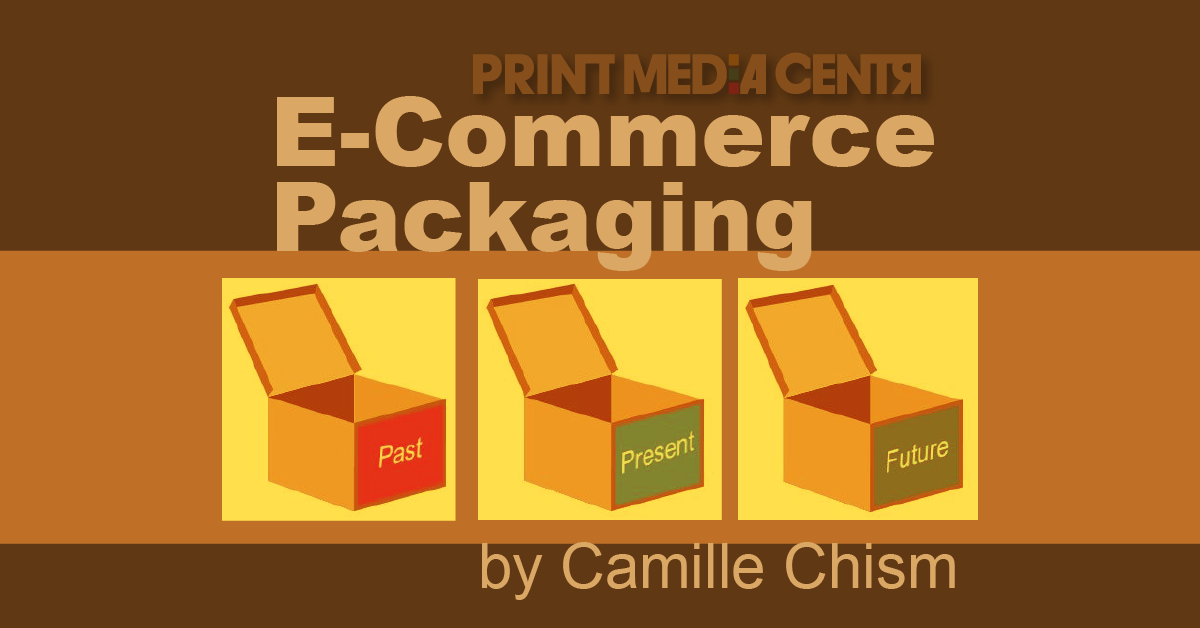
Past
Catalog sales existed in the mid-1600s for seed and book sales, by the last half of the 1800s, mail-order businesses were well established in Europe. Trains shipped products to distant customers in barrels, bins, and boxes. Companies such as Tiffany’s, Sears, and Montgomery Ward were early leaders in catalog sales in the United States by the beginning of the 20th Century.
Fast forward to the Electronic Age, which ushered in e-Commerce. Mail-order companies with a vision of the future started taking orders online, immediately driving packaging changes. Orders grew quickly, but companies soon found out the packaging they shipped safely by the truckload, didn’t always protect the same product on smaller trucks and planes. As e-commerce began to grow outside of the mail-order/catalog sector, the fastest and cheapest way to ship products was to grab boxes off pallets and ship through the post office, UPS, or FedEx.
Present
The COVID-19 Pandemic immediately changed the face of eCommerce forever. As people hunkered down and started ordering almost everything online, companies were flooded with business. Many of the eCommerce trends between 2020 and 2021 are related to COVID. The e-commerce packaging market is expected to grow by USD 45.41 billion during 2020-2024, according to Technavio. In addition to the explosion in business, there were several changes. Companies like FedEx and UPS, as well as the USPS, were crushed with deliveries and made changes to their staffing and processes, and surpassed their plans, hitting annual revenue goals in the first half of 2020. Amazon’s growth from the online shift of pandemic-related orders increased revenue so much that Jeff Bezos now earns about $2,500 per second, at the peak of lockdown Bezos earned over $11,000 per second.
Sustainability is one of the top trends related to packaging today. As the amount of packaging used for product shipments grew and more products shipped directly to homes, consumers saw a need to dispose of the packaging that would have been recycled or put in the trash at a warehouse. Reduce/Reuse/Recycle has come into vogue once again because the average person can see exactly how much packaging is used and need to manage the extra packaging. Consumers are asking for biodegradable and compostable packaging but are now more willing to pay extra for it. With the increased demand for new types of sustainable packaging, suppliers are making and inventing new packs with incredible speed. Another category of packaging expands on the least amount of packaging and challenges people to have Zero Waste days, in which packaging comes to the forefront. These trends emphasize reducing or reusing packaging along with other ways to eliminate waste for one day.
The Unboxing experience is a hot trend. So many people were at home in 2020 and began interacting more with social media by filming the process of opening boxes received and posting them online. While many of the videos are meant to show the excitement around the new item, the topic of some of the most viral videos was about “too much packaging” or “a very large box for a very small product with a lot of air”. An entire segment of unboxing videos focuses on packaging, how well the packaging presents and protects the product, as well as rating whether or not the least amount of packaging that could have been used was used.
Future
When the pandemic started just over a year ago, I made some predictions on what the future of packaging would look like post-pandemic. I still believe all these trends are here to stay and will continue to evolve. Since we are still in the middle of this pandemic, I will touch briefly on each and rate how close the prediction was as of today.
👍 Push to online – online orders have pushed malls and storefronts to closure and bankruptcy and online ordering is booming
👍 Brick & Mortar – yes, malls are closing, the transition of malls to Amazon distribution centers was a surprise
👌 Tracking RFID/Geotags – more companies are looking at tracking materials and making software and equipment investments, but not as much as anticipated.
👎 Individual packs – companies are developing smaller portion sizes, but this is still a challenge due to the investment for new equipment and the opposite push by consumers to reduce packaging
👎 Microbe resistant packs – this has not happened
👍 Sustainability redefined – consumers are overwhelmingly making their voices heard through social media and purchases on sustainable packaging
 Camille Corr Chism, CPPL Fellow, has a diverse background in packaging engineering, design, supply chain, project management, and new product introductions. Her experience includes a variety of industries including food, e-commerce, technology, distribution, pharmaceutical, industrial, and automotive. Earning an MS and BS in Packaging, Camille earned a Six Sigma Black Belt (2019), and a lifetime certification as a Certified Packaging Professional in 2006. She was inducted into the IoPP College of Fellows in 2014.
Camille Corr Chism, CPPL Fellow, has a diverse background in packaging engineering, design, supply chain, project management, and new product introductions. Her experience includes a variety of industries including food, e-commerce, technology, distribution, pharmaceutical, industrial, and automotive. Earning an MS and BS in Packaging, Camille earned a Six Sigma Black Belt (2019), and a lifetime certification as a Certified Packaging Professional in 2006. She was inducted into the IoPP College of Fellows in 2014.
Camille is the owner of Indigo Packaging and Consulting. She is the go-to person for all your packaging products and packaging design needs. Connect with her on LinkedIn, LinkedIn Company Page, Twitter @indigopkg, and Instagram @indigopkg











